Ro'yxatga olish sanasi 14 Mart 2024
28 SotishDesigning graphical visualization and HR specialization. Design and AI. (Grafik vizualizatsiya va HR mutaxassisligini loyihalash. Dizayn va AI.)
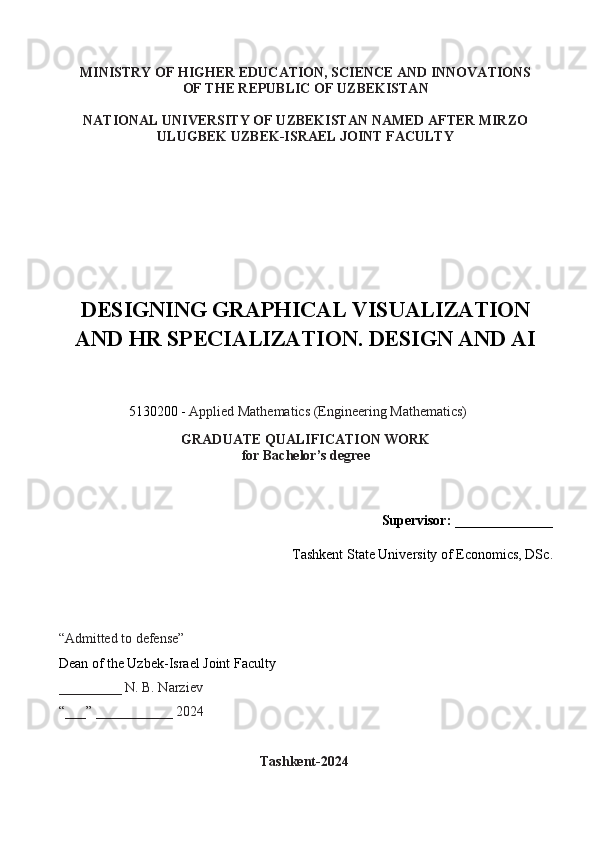
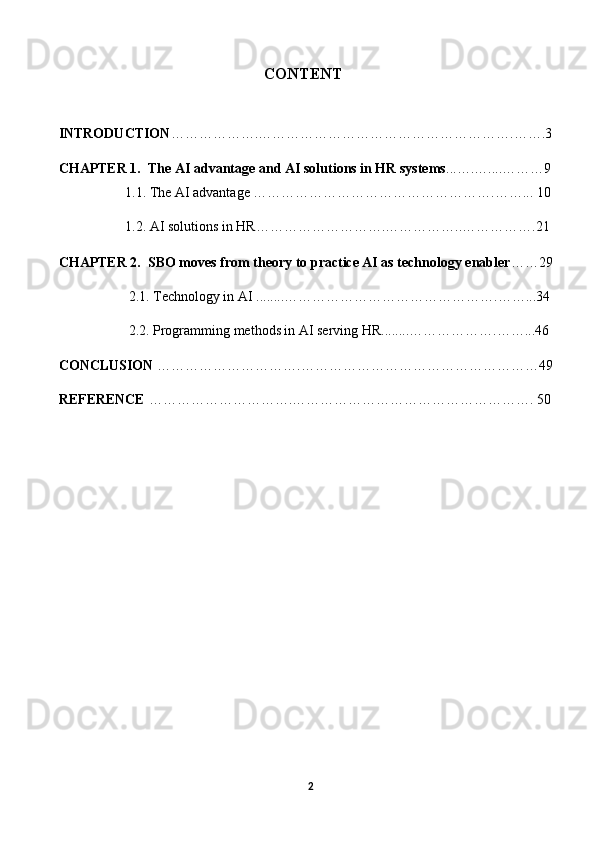
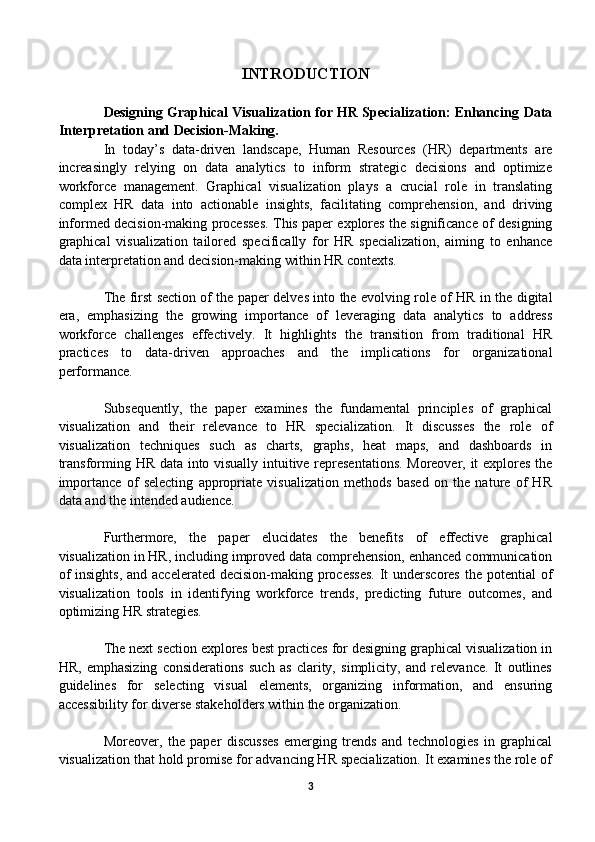
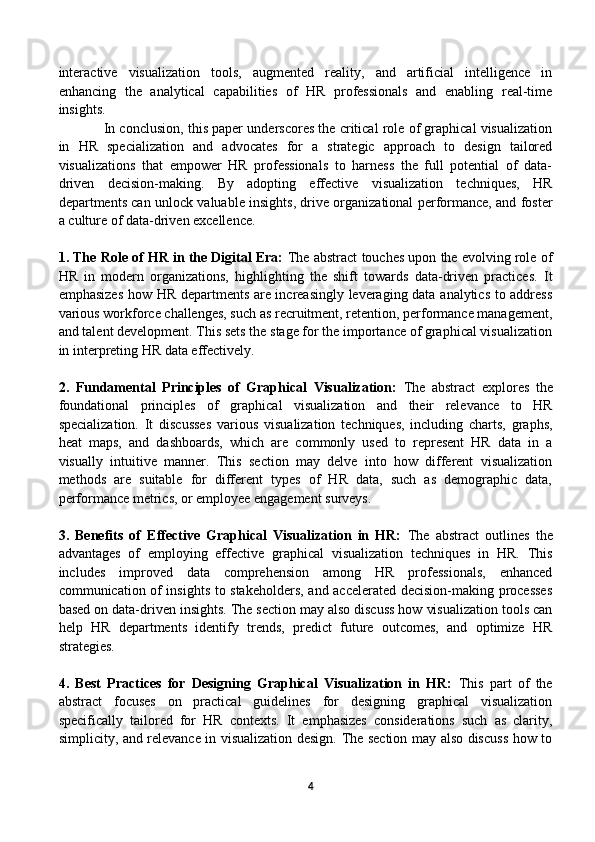
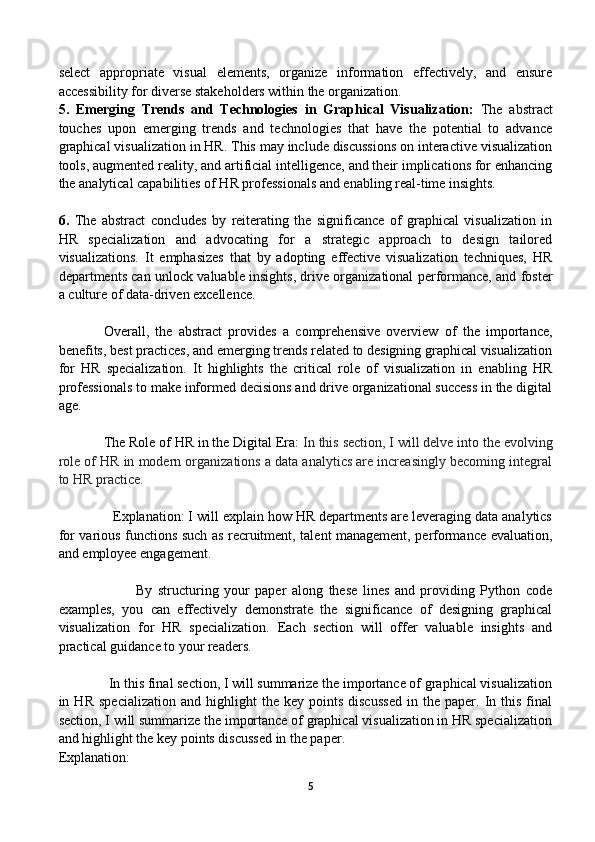
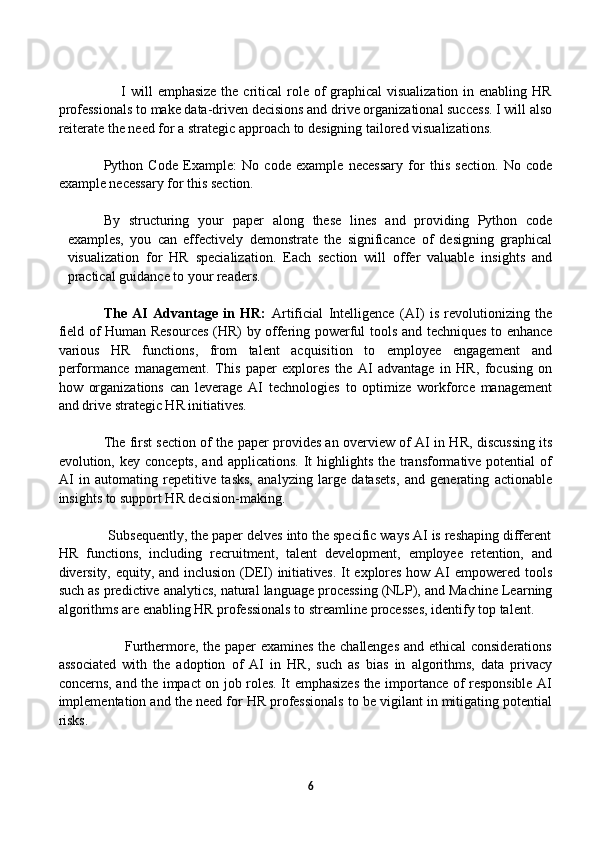
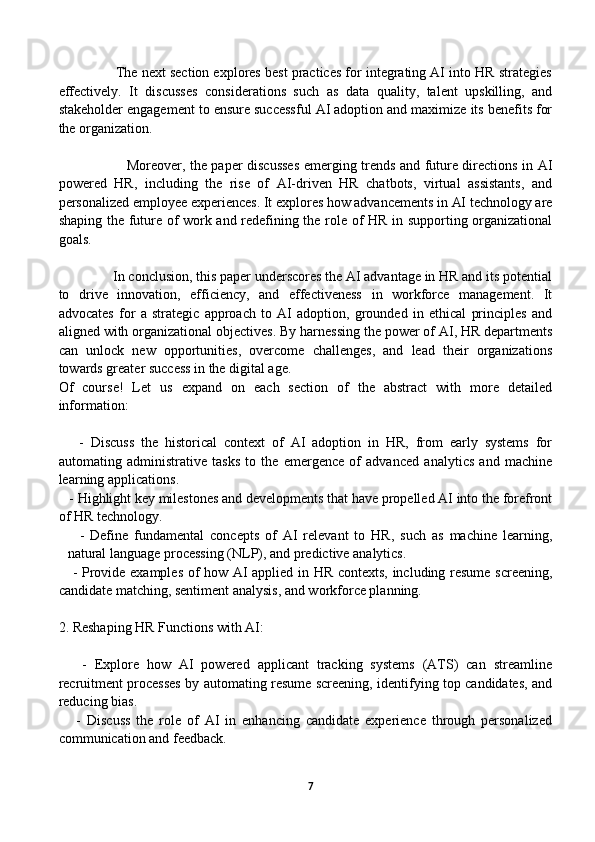
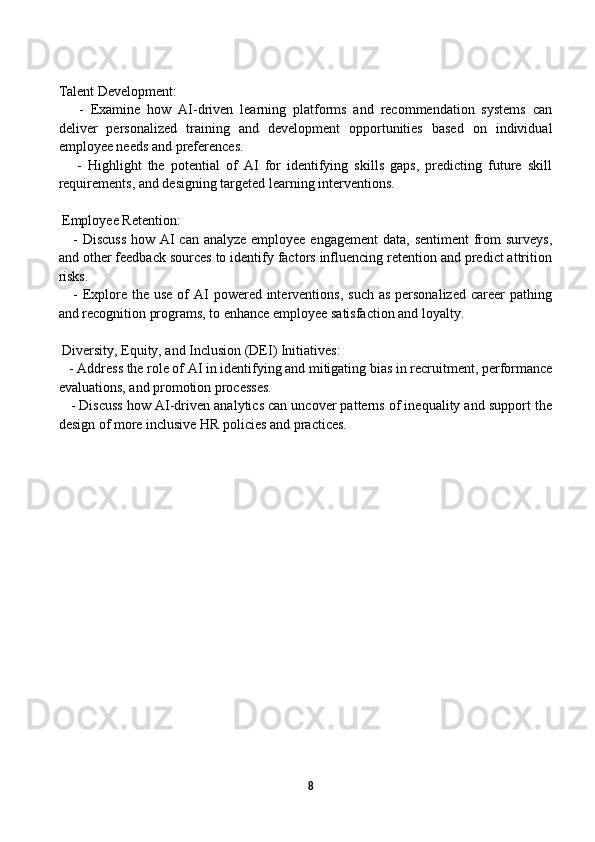
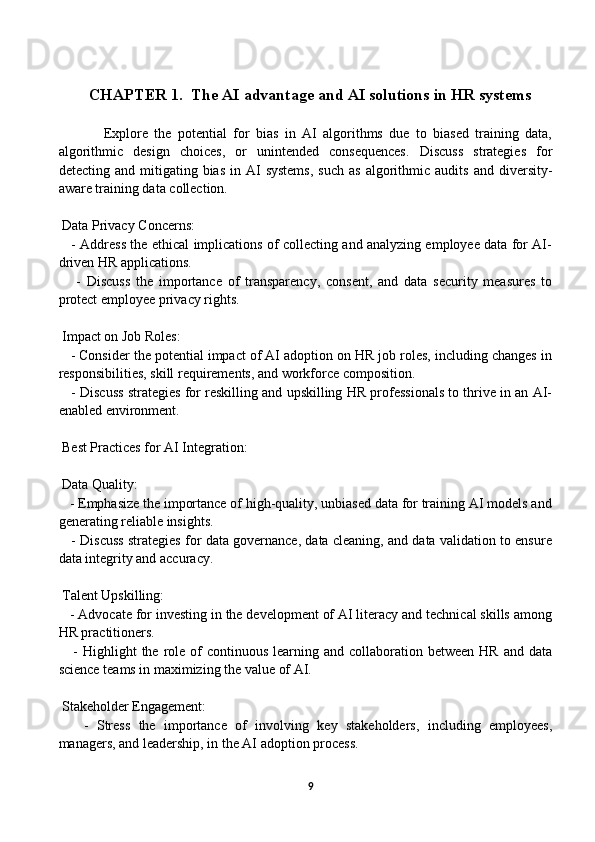
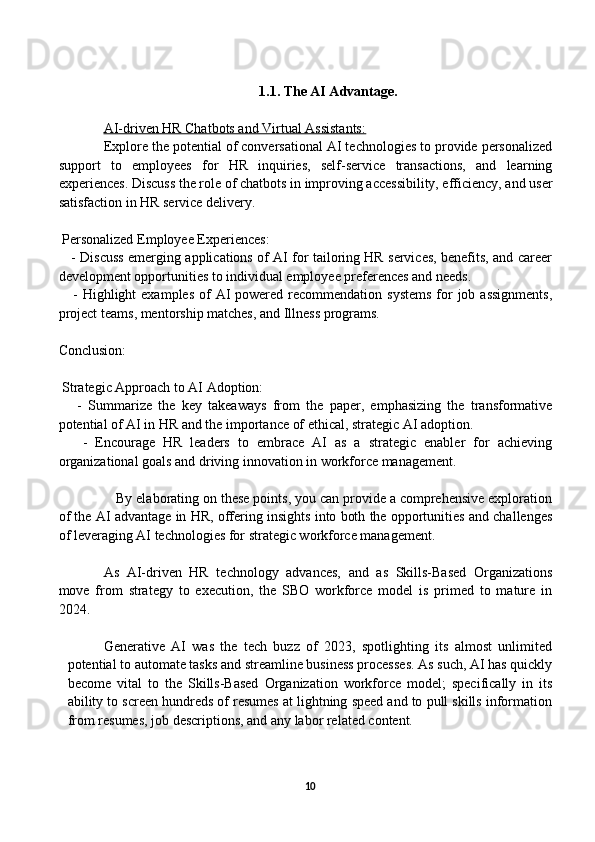
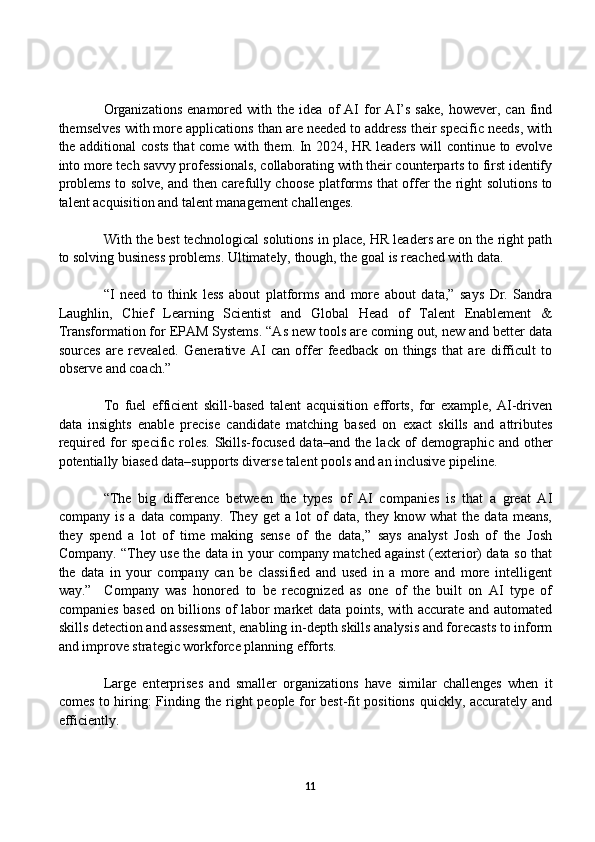
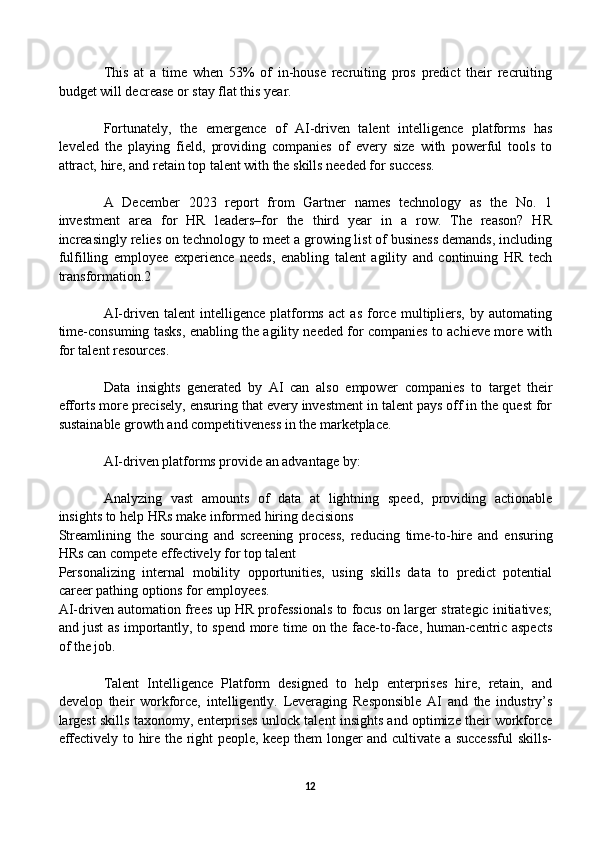

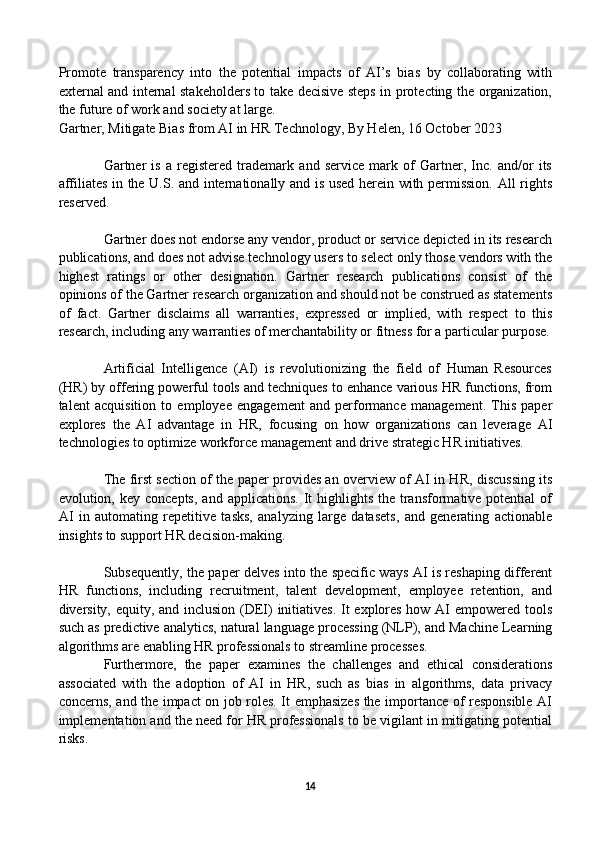
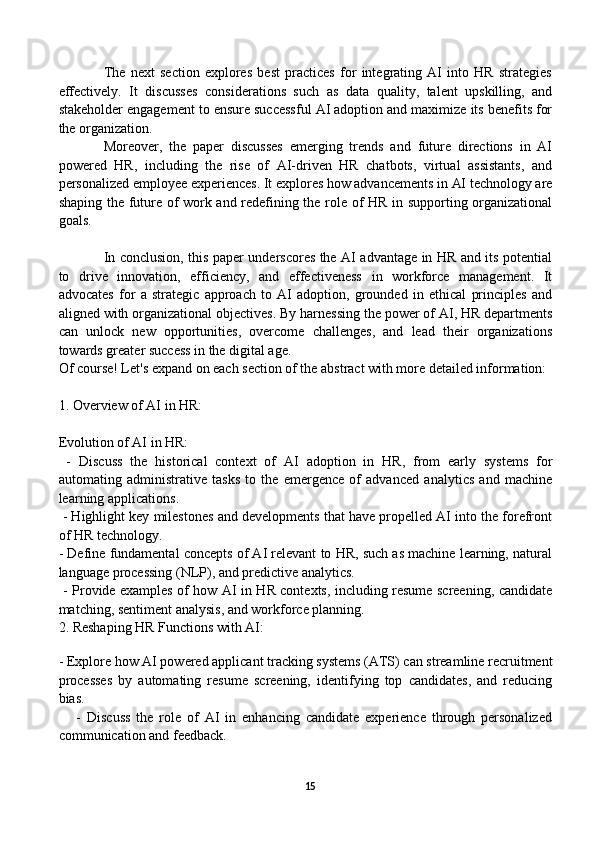
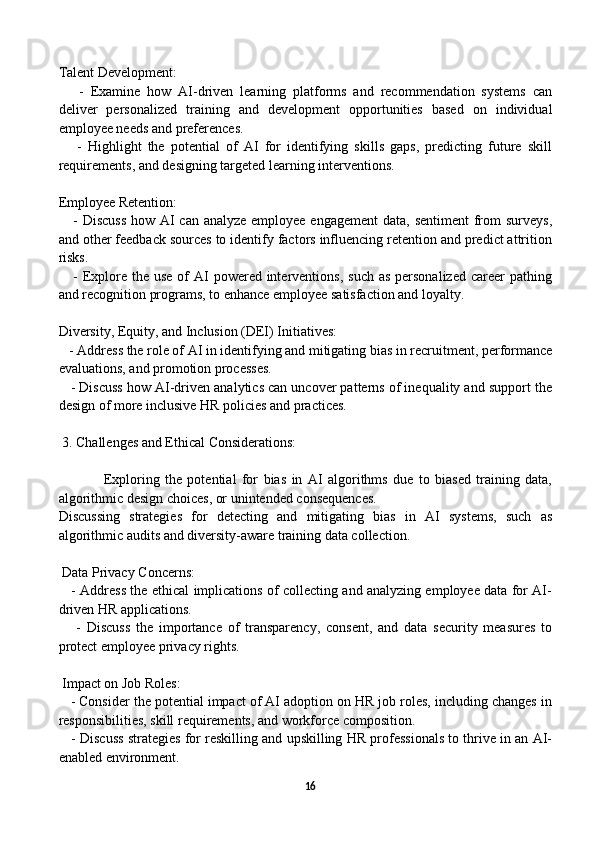
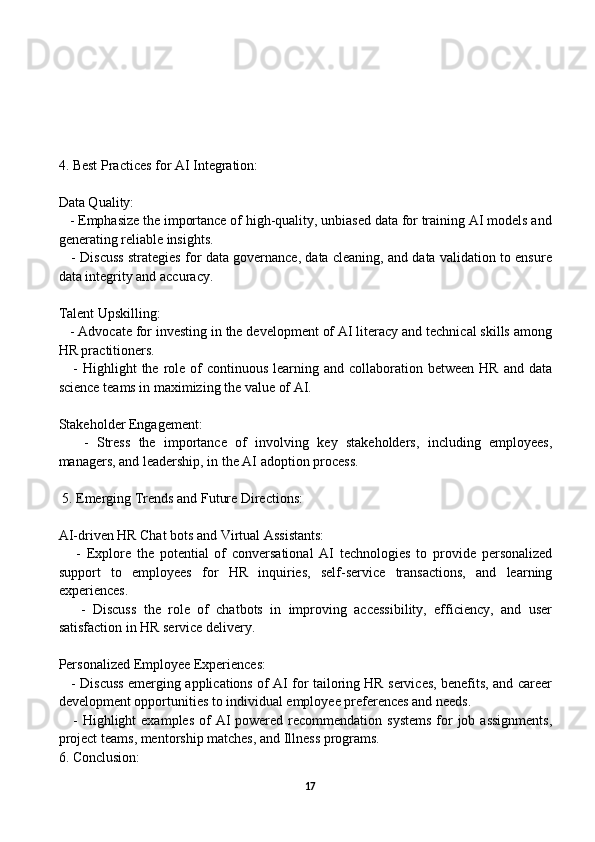
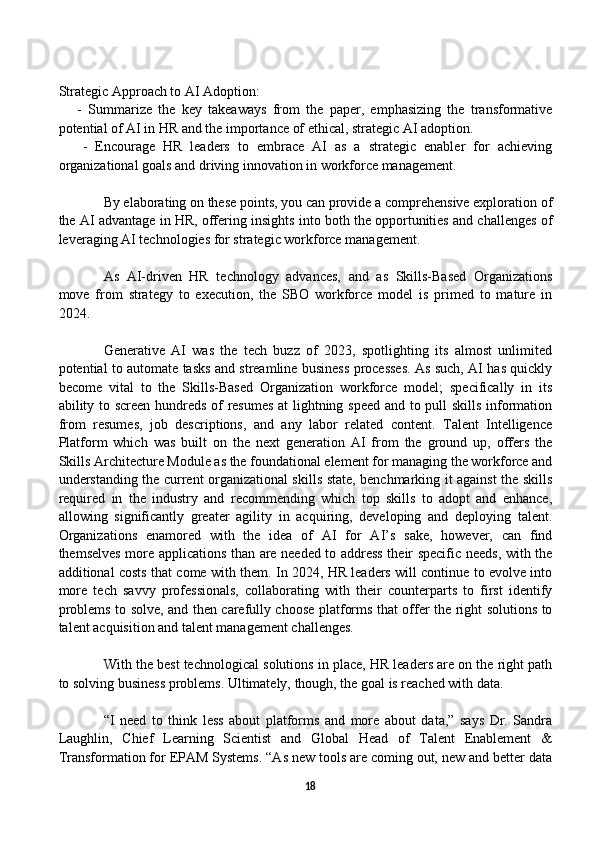
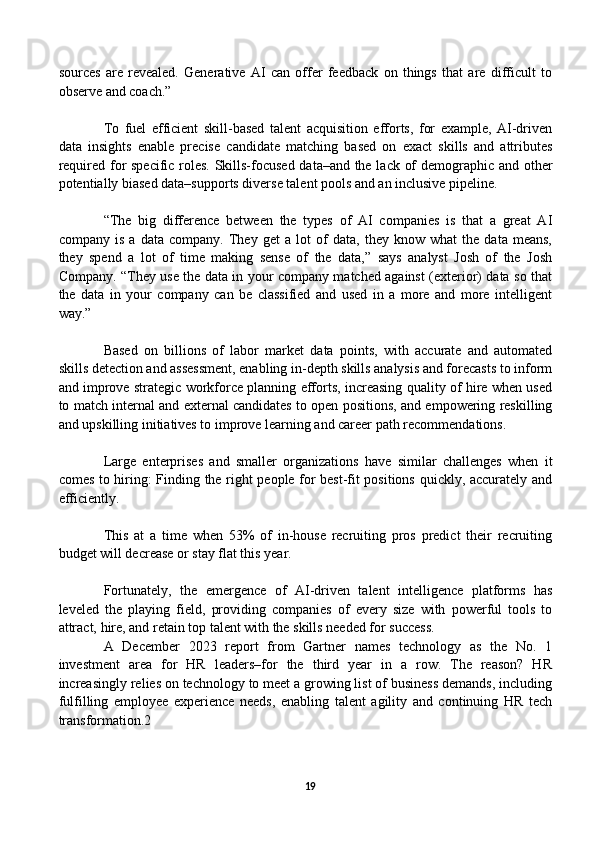
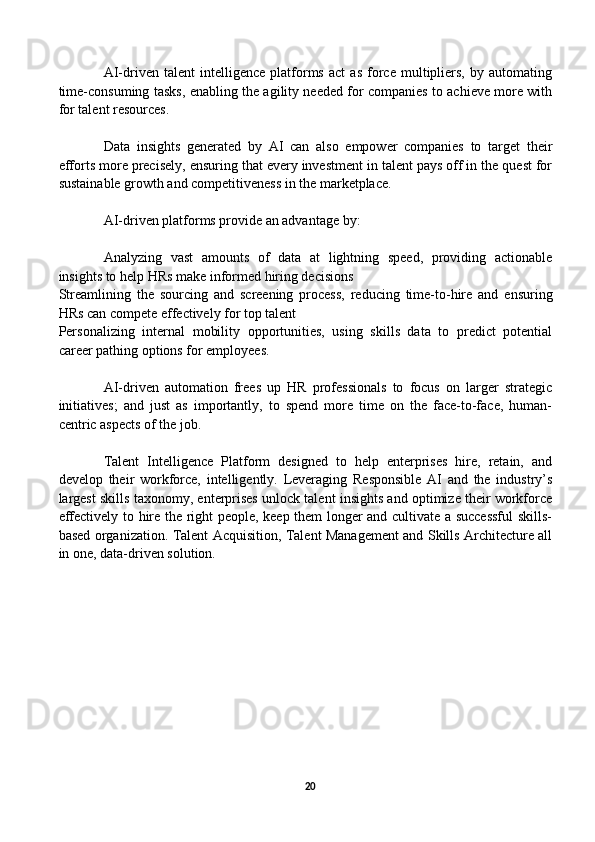
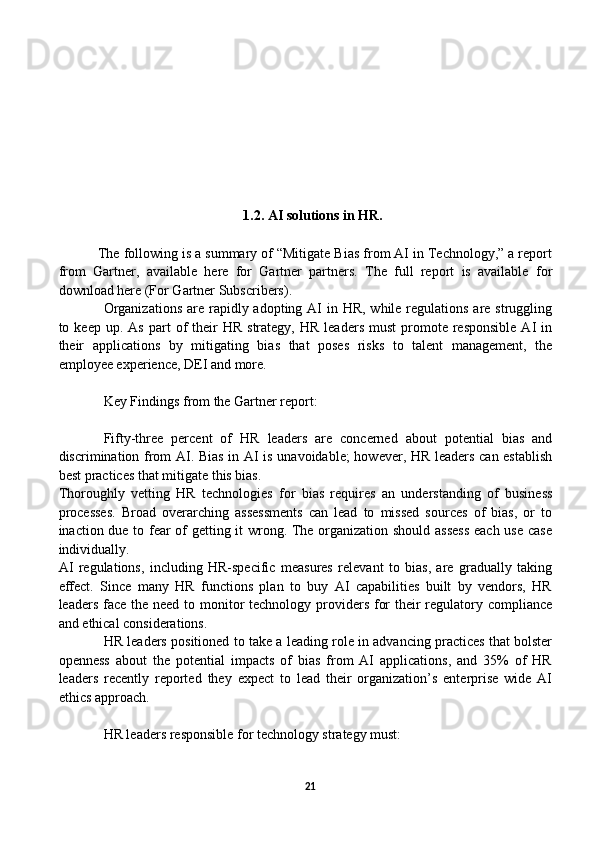
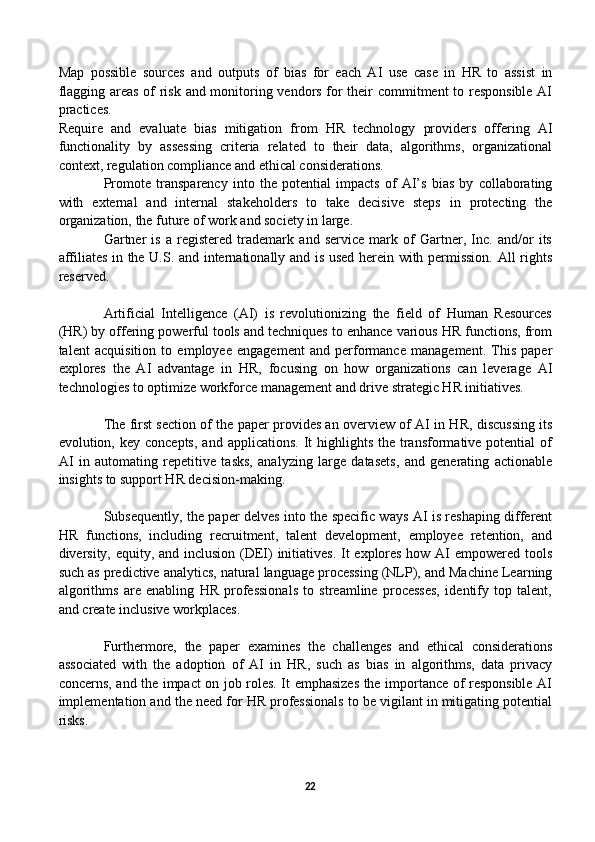

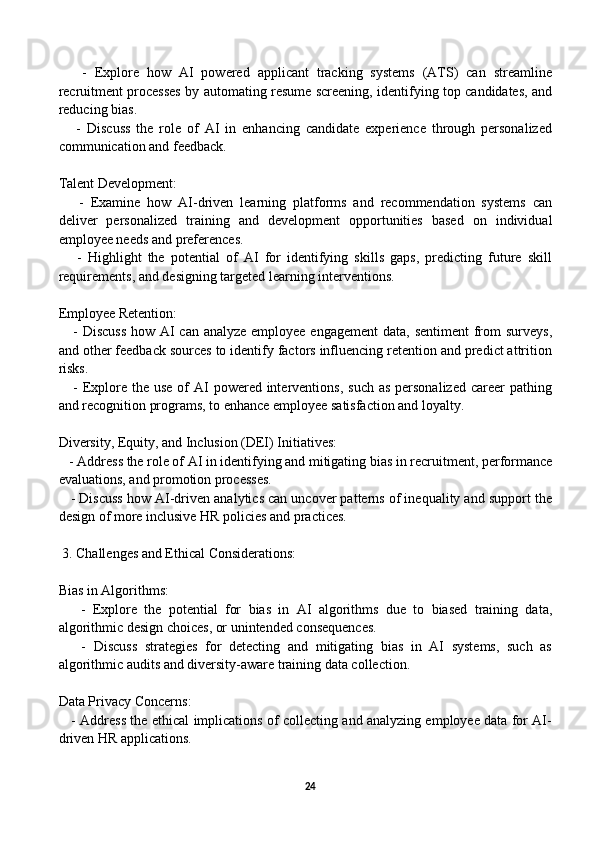
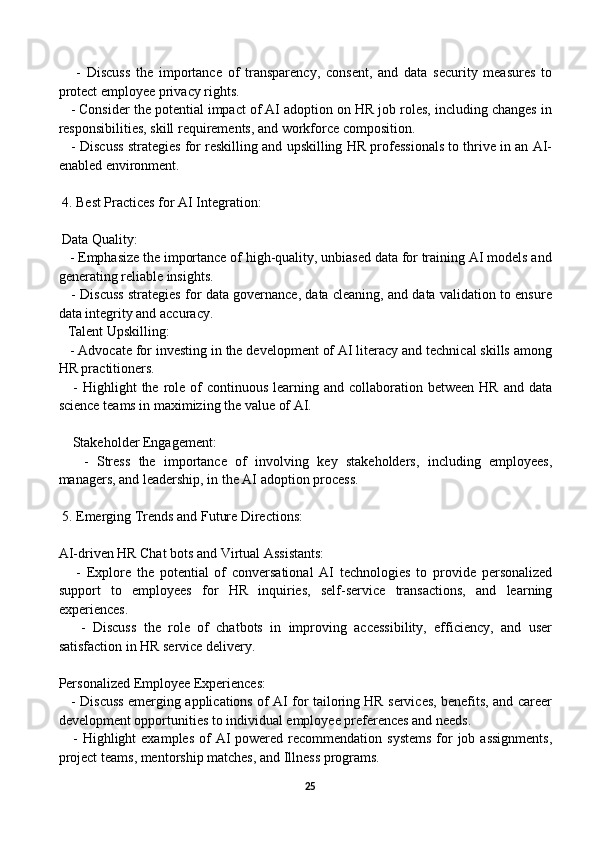
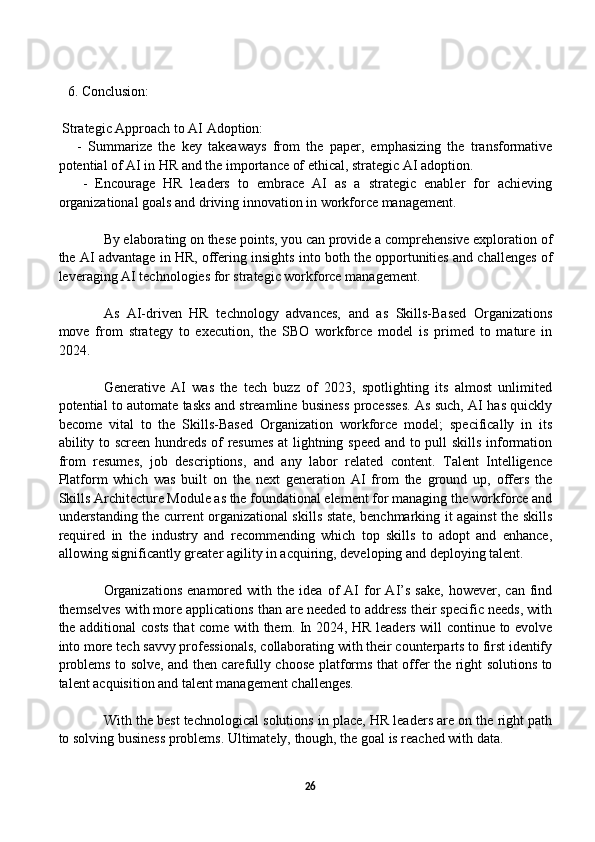
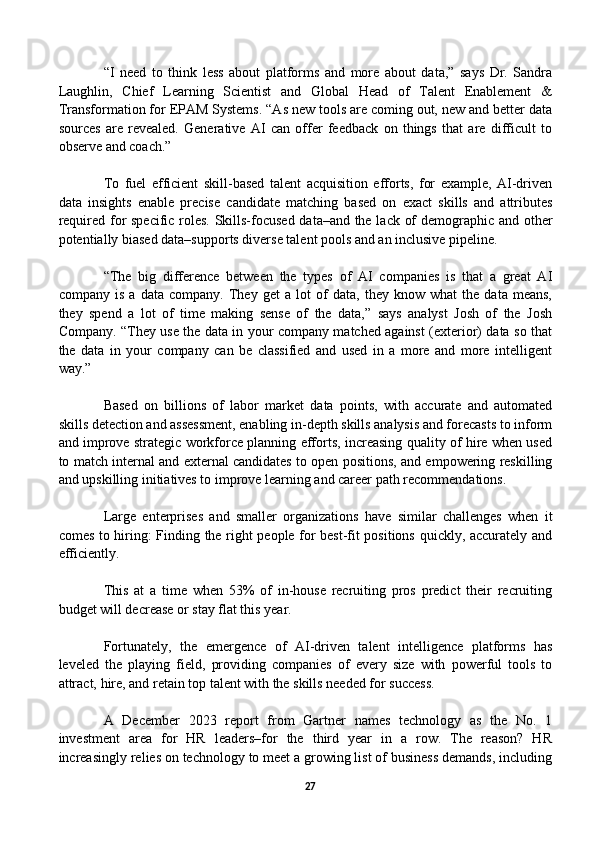
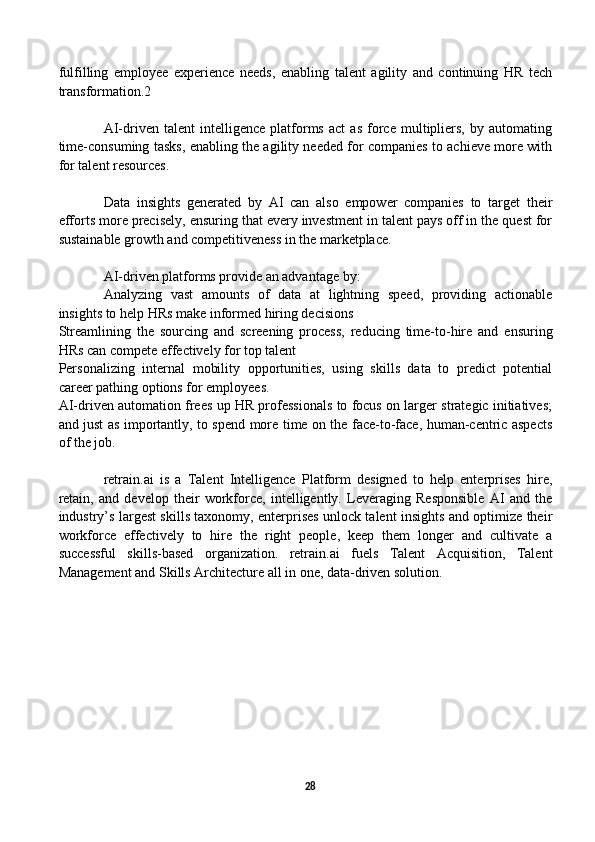

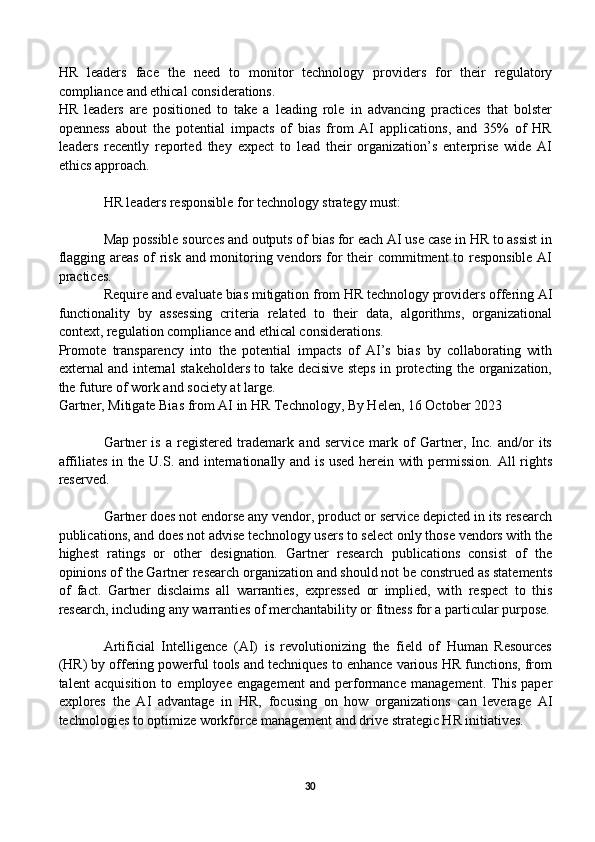
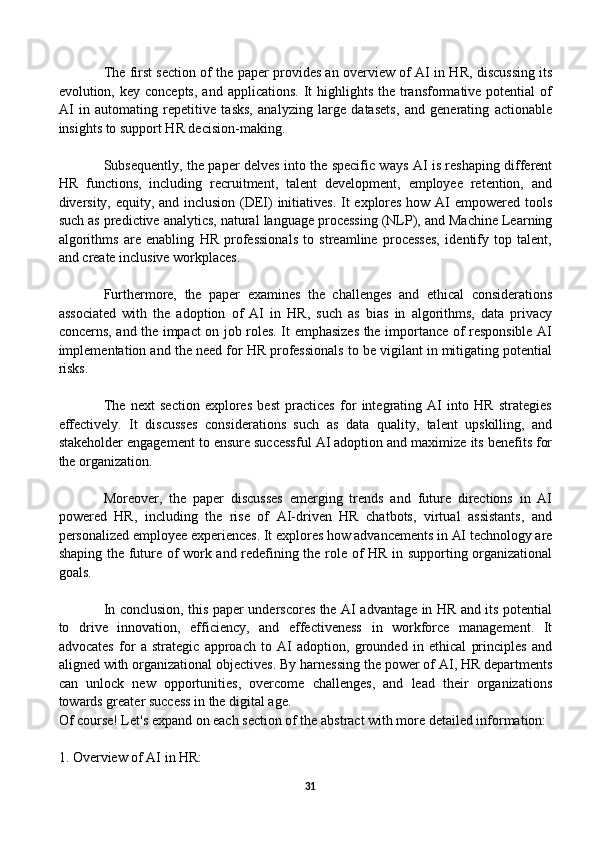
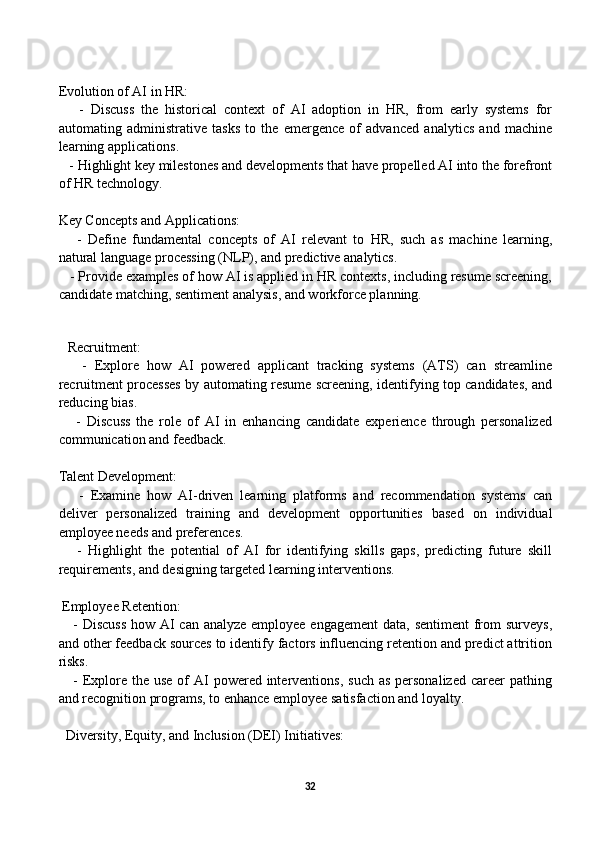

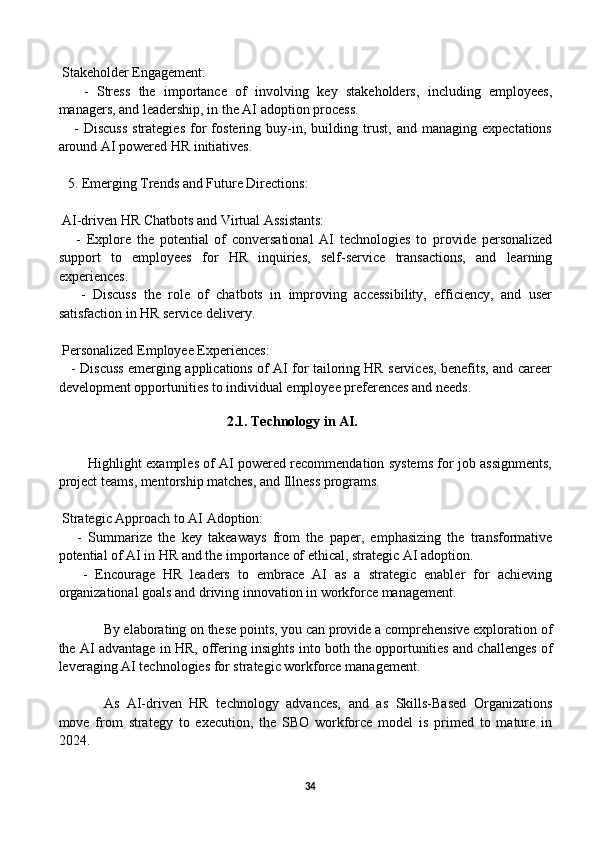
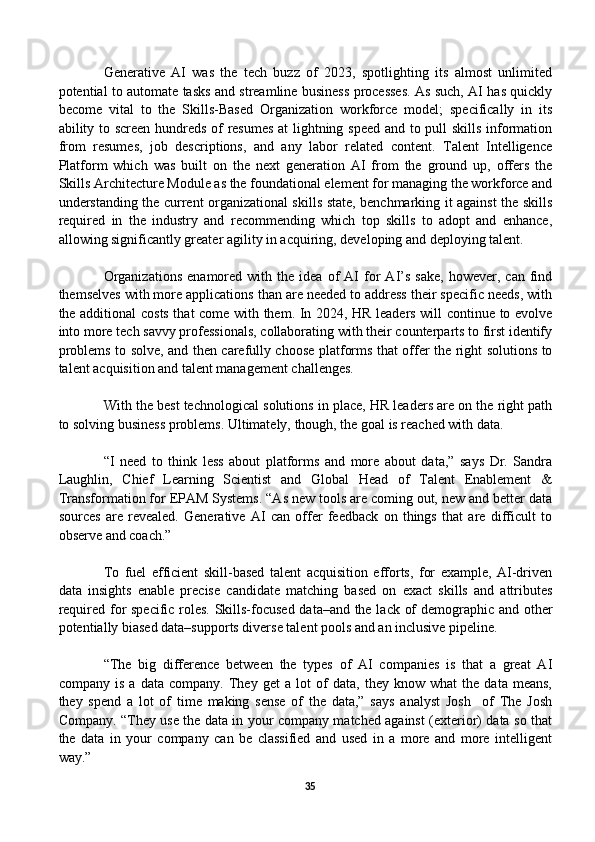
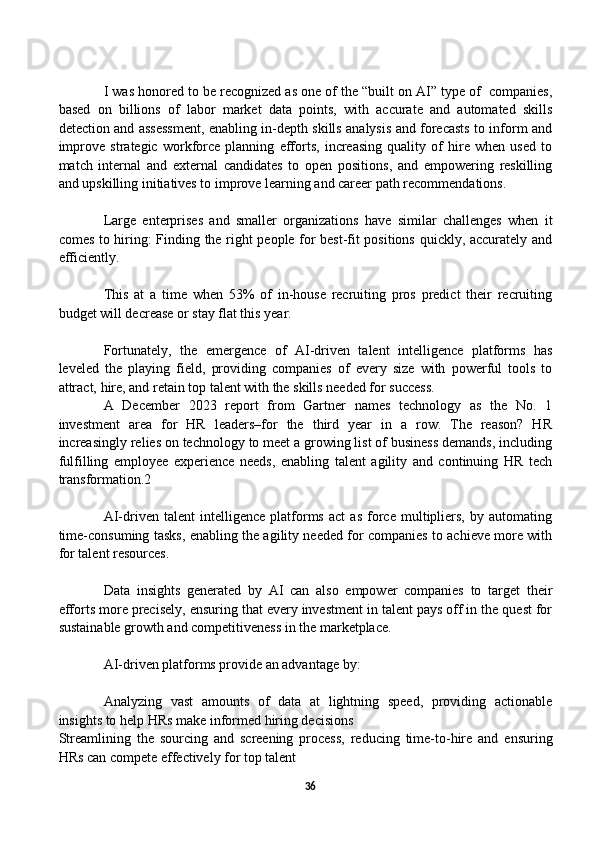
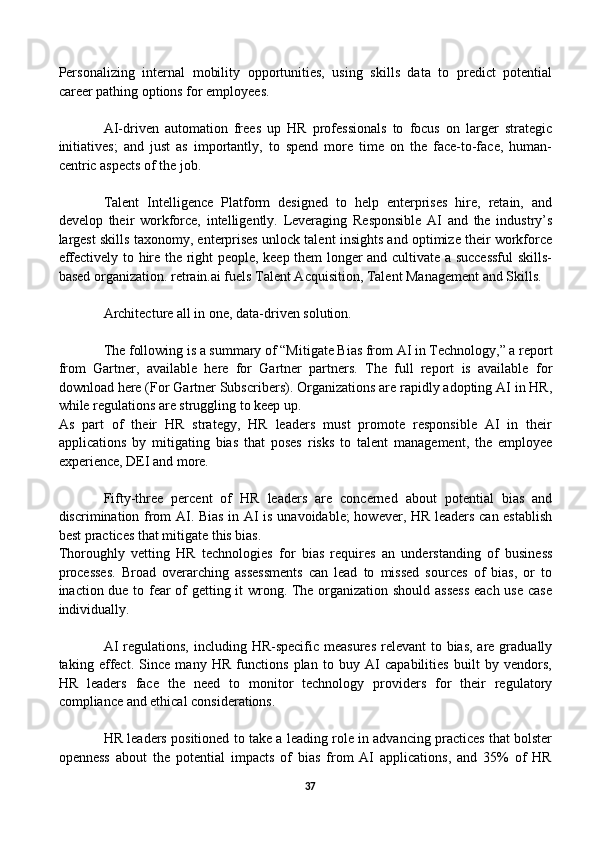
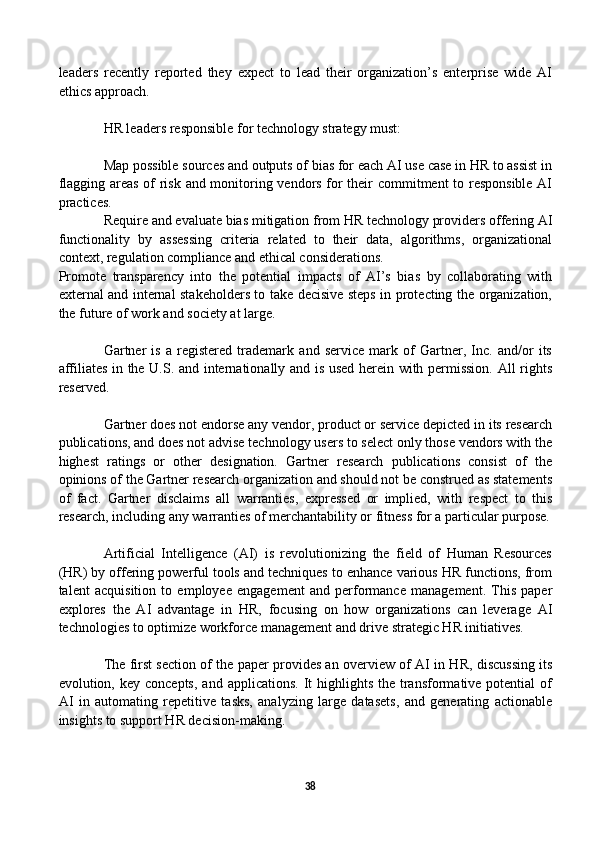
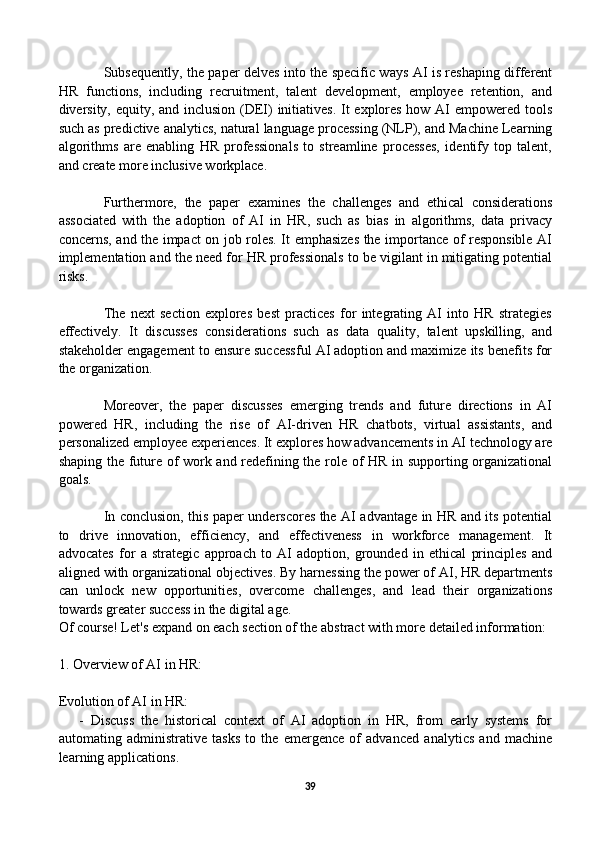


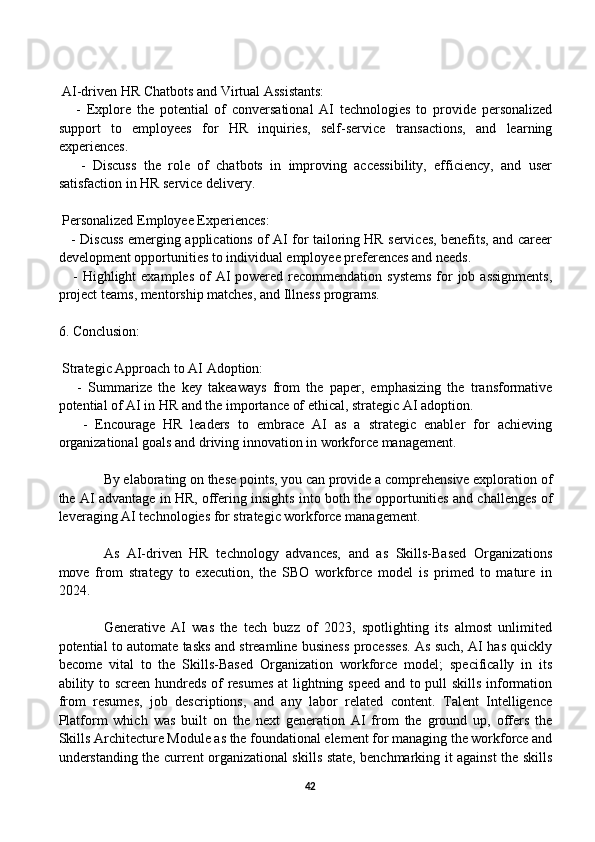

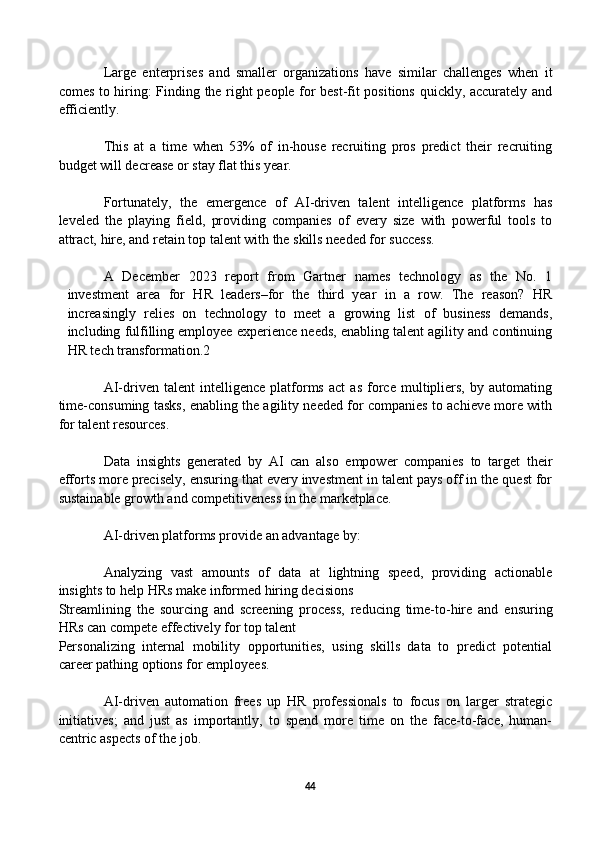
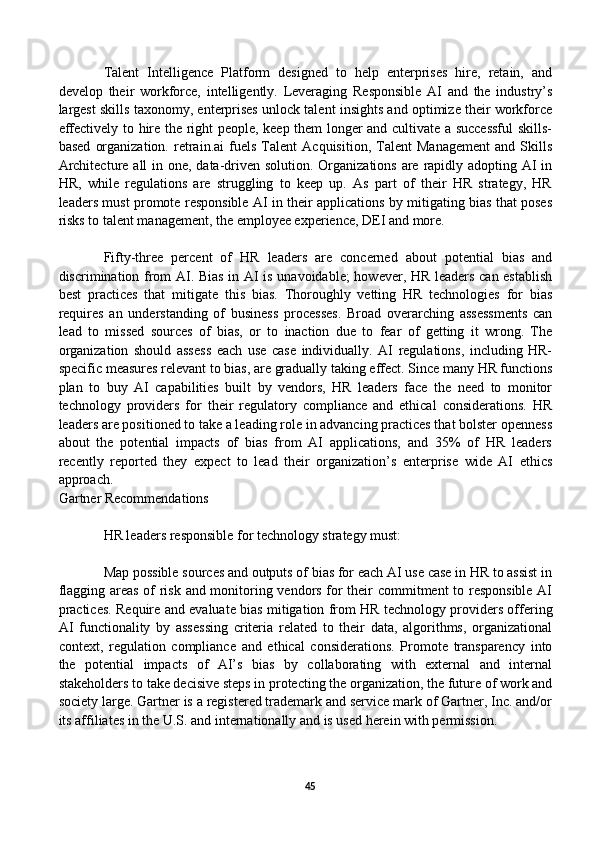
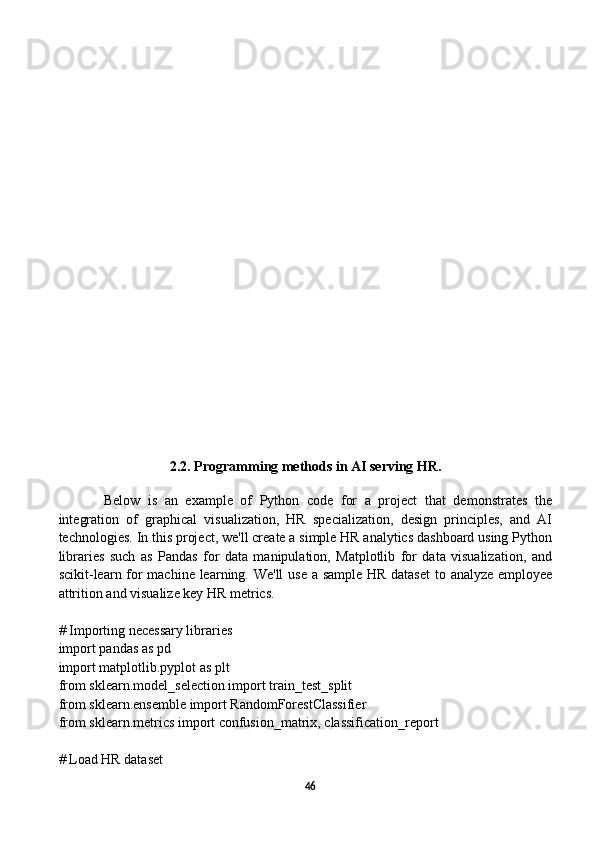
![hr_data = pd.read_csv('hr_data.csv')
# Exploratory data analysis
print(hr_data.head())
print(hr_data.describe())
# Data preprocessing
# Convert categorical variables to numerical using one-hot encoding
hr_data = pd.get_dummies(hr_data, columns=['Department', 'Salary'])
# Separate features and target variable
X = hr_data.drop('Attrition', axis=1)
y = hr_data['Attrition']
# Split data into training and testing sets
X_train, X_test, y_train, y_test = train_test_split(X, y, test_size=0.2, random_state=42)
# Train Random Forest classifier
clf = RandomForestClassifier(n_estimators=100, random_state=42)
clf.fit(X_train, y_train)
# Make predictions on test data
y_pred = clf.predict(X_test)
# Evaluate model performance
print(confusion_matrix(y_test, y_pred))
print(classification_report(y_test, y_pred))
# Visualize HR metrics
# Bar chart for employee attrition
attrition_counts = hr_data['Attrition'].value_counts()
plt.bar(attrition_counts.index, attrition_counts.values)
plt.xlabel('Attrition')
plt.ylabel('Count')
plt.title('Employee Attrition')
plt.show()
47](https://docx.uz/documents/9ec9b9ba-922a-4ae5-b820-b51e74cdccb7/page_47.png?v=1)
![# Pie chart for department-wise attrition
dept_attrition_counts = hr_data.groupby('Department').agg({'Attrition': 'sum'})
plt.pie(dept_attrition_counts['Attrition'],
labels=dept_attrition_counts.index, autopct='%1.1f%%')
plt.title('Department-wise Attrition')
plt.show()
# Scatter plot for age vs. monthly income
plt.scatter(hr_data['Age'],
hr_data['MonthlyIncome'], c=hr_data['Attrition'], cmap='viridis', alpha=0.5)
plt.xlabel('Age')
plt.ylabel('Monthly Income')
plt.title('Age vs. Monthly Income (Attrition)')
plt.colorbar(label='Attrition')
plt.show()
1. We start by importing necessary libraries such as Pandas, Matplotlib, and scikit-
learn.
2. Next, we load the HR dataset (`hr_data.csv`) containing employee information,
including features such as age, department, salary, etc., and the target variable 'Attrition'
indicating whether an employee has left the company or not.
3. We perform exploratory data analysis (EDA) to understand the structure and
distribution of the data.
4. Data preprocessing: We convert categorical variables into numerical format using
one-hot encoding.
5. We split the data into training and testing sets using scikit-learn's `train_test_split`
function.
6. We train a Random Forest classifier on the training data to predict employee attrition.
48](https://docx.uz/documents/9ec9b9ba-922a-4ae5-b820-b51e74cdccb7/page_48.png?v=1)
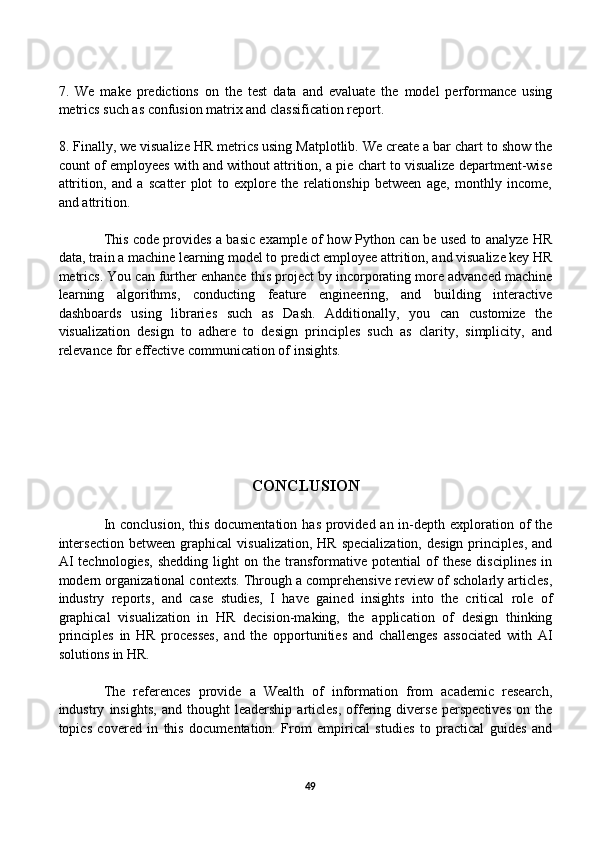

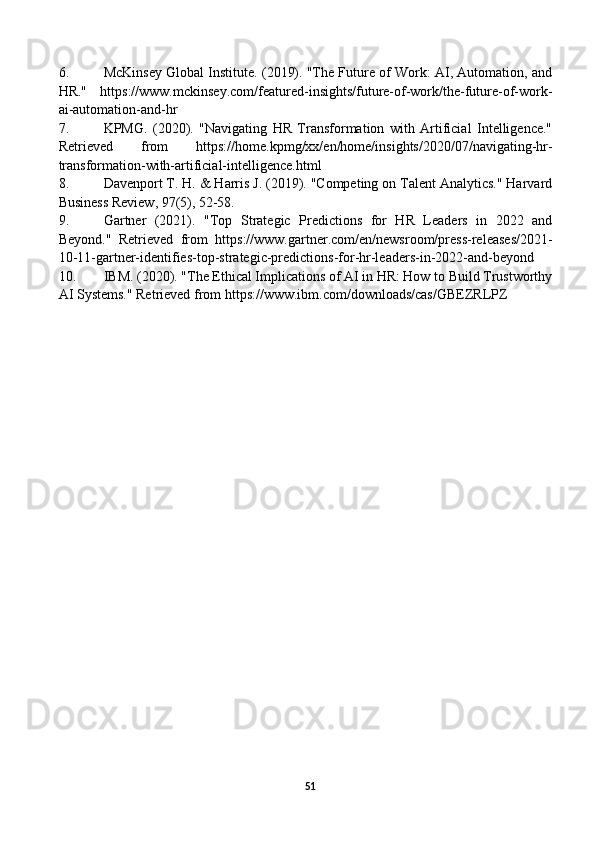
СОNTENT
INTRОDUСTIОN……………….……………………………………………….…….3
СHАPTER 1. The AI advantage and AI solutions in HR systems...….…....………9
1.1. The AI advantage …………………………………………….……... 10
1.2. AI solutions in HR……………………….……………..…………….21
СHАPTER 2. SBO moves from theory to practice AI as technology enabler……29
2.1. Technology in AI ........……………………………………….……...34
2.2. Programming methods in AI serving HR........……………….……...46
CONCLUSION ………………………….……………………………………………49
REFERENCE ………………………….……………………………………………. 50